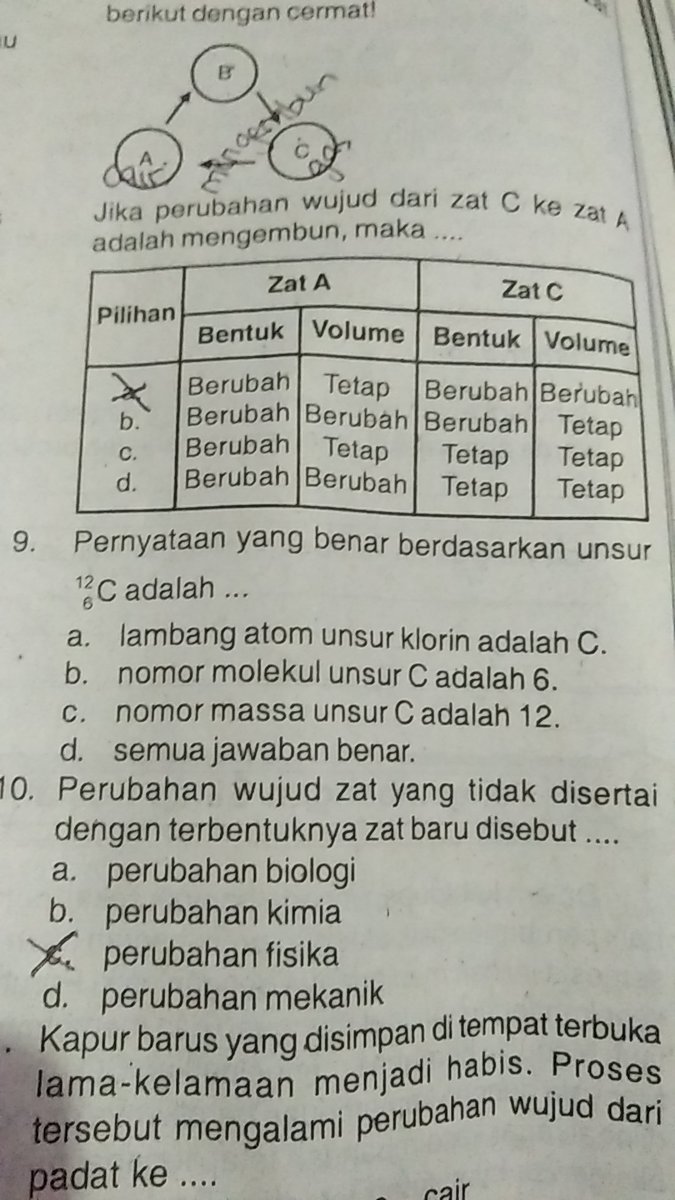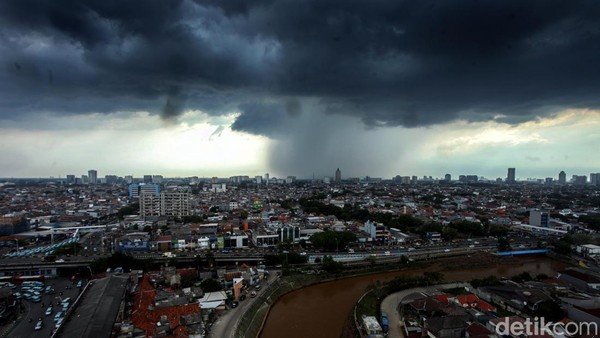
Everyday life is full of changes, often happening right before our eyes. When we see ice melting into water or a piece of paper crumpling, we witness what scientists call a change in state. This type of change, known as ‘perubahan wujud yang tidak disertai dengan terbentuknya zat baru disebut perubahan’, highlights how materials can shift in form without creating new substances. Understanding these transformations deepens our appreciation for the world around us, as we recognize the simple yet fascinating processes that occur daily.
Perubahan Wujud yang Tidak Disertai dengan Terbentuknya Zat Baru Disebut Perubahan
When we talk about changes in matter, it’s essential to distinguish between different types of changes that occur around us. One of the fundamental concepts in science is the idea of “perubahan wujud” or changes in the state of matter. More specifically, we focus on the type of change that doesn’t involve the formation of a new substance. In this article, we will explore what this means, the different kinds of changes, and why they matter in our daily lives.
Understanding Changes in Matter
Matter exists in various states: solid, liquid, and gas. Each state has unique characteristics defined by its physical properties. Changes in matter refer to the transformation from one state to another, but when we specify that these changes do not create a new substance, we enter the realm of physical changes.
What is a Physical Change?
A physical change is a transformation that alters the form or appearance of a substance without changing its chemical composition. This means that the substance remains the same at the molecular level, even though it may look or feel different. Examples of physical changes include:
- Melting: Ice melting into water.
- Freezing: Water freezing into ice.
- Evaporation: Water turning into steam.
- Condensation: Steam condensing into water.
- Breaking: Breaking a glass into smaller pieces.
Each of these examples shows how the physical state of a substance changes while the substance itself remains unchanged.
Why is it Important to Differentiate Physical Changes?
Understanding the difference between physical changes and chemical changes is crucial in various fields, such as cooking, manufacturing, and environmental science. Here are a few reasons why this differentiation is important:
- Safety: Recognizing physical changes can help in identifying safe versus hazardous processes in laboratories and industries.
- Recycling: Knowing whether a material can be recycled or reused often depends on whether it can revert to its original state without chemical alteration.
- Everyday Life: From cooking to crafting, physical changes play a vital role in activities we do daily.
Types of Physical Changes
Physical changes can be categorized into various types based on how they occur. Understanding these types helps us see the world around us more clearly. Let’s explore some of them.
State Changes
The most common examples of physical changes are the changes of state. These include:
- Solid to Liquid (Melting): Occurs when heat is added to a solid. For instance, ice melts when exposed to room temperature.
- Liquid to Solid (Freezing): This happens when a liquid loses heat. For example, water turns into ice in a freezer.
- Liquid to Gas (Evaporation): When a liquid gains heat, it may evaporate into vapor. Think of puddles drying up on a sunny day.
- Gas to Liquid (Condensation): When gas cools, it may turn back into liquid. This is why you see water droplets on a cold glass of water.
Size and Shape Changes
Another type of physical change is the alteration in size or shape. This happens without changing the identity of the material. Examples include:
- Shredding Paper: When you tear or cut paper, it remains paper, but its size and shape have changed.
- Crushing Cans: Crushing an aluminum can changes its shape and size, yet it’s still aluminum.
- Mixing Ingredients: When you mix flour and sugar for baking, each ingredient retains its identity, but their forms combine.
Mixing Substances
Mixing different substances can also lead to physical changes. In this case, each component retains its properties:
- Sand and Water: Mixing these two results in a different texture, but you can separate them later.
- Fruit Salad: Combining various fruits changes their arrangement but not their nature.
Examples of Physical Changes in Everyday Life
Physical changes are all around us, and recognizing them can help enhance our understanding of the world. Here are some everyday examples:
Cooking
In the kitchen, many physical changes occur. For instance:
- Boiling Water: When you boil water, it transitions from liquid to gas, yet it remains water.
- Chopping Vegetables: Cutting vegetables alters their shape and size but keeps their nutritional content intact.
Nature
Nature is a master of physical change. Consider:
- Seasonal Changes: Snow melts in spring, turning into water, but it’s still H2O in a different state.
- Rock Erosion: Rocks can break down into smaller pieces through natural processes while remaining the same material.
Art and Craft
In arts and crafts, we see many physical changes:
- Clay Sculpting: Shaping clay into various forms retains its identity as clay.
- Painting: Applying paint to a canvas changes its appearance but does not alter the material of the canvas itself.
The Science Behind Physical Changes
To appreciate physical changes fully, it’s helpful to understand the science that governs these transformations.
Molecules in Motion
When a substance undergoes a physical change, the molecules that make up the substance are still present, but their arrangement and movement may vary:
- In Solids: Molecules are tightly packed and vibrate in place.
- In Liquids: Molecules are close together but can move past each other, allowing liquids to flow.
- In Gases: Molecules are far apart and move freely, spreading out to fill the available space.
Energy Changes
Physical changes often involve energy changes, particularly heat energy. Heat can be added or removed to cause changes in state:
- Endothermic Changes: These require the absorption of heat, like melting ice.
- Exothermic Changes: These release heat, such as when water freezes.
Common Misconceptions about Physical Changes
Many people can confuse physical changes with chemical changes. It’s important to clarify these misconceptions:
Understanding Chemical Changes
Chemical changes involve a substance transforming into a new substance with different properties. Key differences include:
- New Substances: Chemical changes result in new substances, while physical changes do not.
- Irreversibility: Many chemical changes are irreversible, whereas most physical changes are reversible.
Examples of Chemical Changes
Some examples of chemical changes include:
- Burning Wood: This produces ash, smoke, and gases, which are new substances.
- Rusting Iron: Iron reacts with oxygen to form rust, changing its chemical structure.
The Role of Temperature in Physical Changes
Temperature plays a crucial role in determining the state of matter:
Low Temperature
At low temperatures, most substances are solid.
- Ice Formation: Water freezes into solid ice.
- Contraction: Materials often contract and become denser.
High Temperature
Conversely, at high temperatures, substances may transition to gas:
- Boiling: Water boils and turns into steam.
- Expansion: Many materials expand when heated.
Applications of Physical Changes
Understanding physical changes is important across different fields. Let’s look at a few applications:
Environmental Science
In environmental science, understanding physical changes helps in managing natural resources:
- Water Cycle: Understanding evaporation and condensation is crucial for modeling weather patterns.
- Pollution Control: Recognizing how pollutants change state helps in designing effective cleanup strategies.
Industry
In industries, physical changes are vital in manufacturing processes:
- Food Industry: Understanding how food changes state (like freezing and drying) keeps products safe and fresh.
PERUBAHAN FISIKA DAN PERUBAHAN KIMIA | SIFAT DAN PERUBAHAN ZAT
Frequently Asked Questions
What are some examples of changes in state that do not result in new substances?
Examples of changes in state that do not result in new substances include the melting of ice into water, the evaporation of water into steam, and the condensation of steam back into water. In each of these cases, the chemical composition of the material remains the same; only its physical state changes.
How can we differentiate between physical changes and chemical changes?
You can differentiate between physical changes and chemical changes by observing whether a new substance forms. Physical changes, such as changes in state or shape, do not create any new substances. In contrast, chemical changes result in new substances with different properties, like rust forming on iron or the combustion of wood.
What role does temperature play in changes of state?
Temperature plays a crucial role in changes of state. Increasing temperature can help substances transition from solid to liquid (melting) and from liquid to gas (evaporation). Conversely, decreasing temperature can lead substances to change from gas to liquid (condensation) and from liquid to solid (freezing). Temperature influences the energy of the particles, thereby facilitating these changes.
Are there any common misconceptions about changes in physical states?
A common misconception is that changes in physical states indicate a chemical change. For example, when water boils, many may think it undergoes a chemical transformation because it changes from liquid to gas. In reality, the water remains chemically the same throughout the process, simply changing state.
How does pressure affect changes in state?
Pressure can significantly influence changes in state. For example, increasing pressure can raise the boiling point of water, making it boil at a higher temperature than 100°C. This is why pressure cookers cook food faster. Similarly, reducing pressure can lower the boiling point, allowing liquids to vaporize quickly at lower temperatures.
Final Thoughts
Perubahan wujud yang tidak disertai dengan terbentuknya zat baru disebut perubahan. This concept is crucial in understanding how substances interact and behave under various conditions. Such changes, like melting or boiling, illustrate the physical properties of materials without altering their chemical composition. Recognizing these changes enhances our comprehension of the physical world and its processes.




